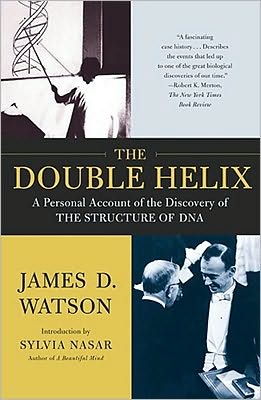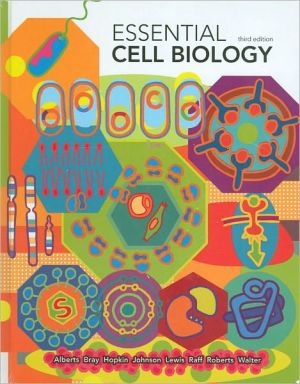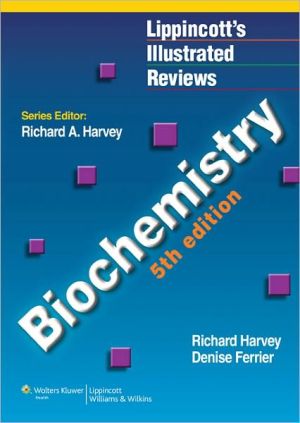Even Electron Mass Spectrometry with Biomolecular Applications
In addition to the essential theoretical background and fundamental principles, this unique reference presents a detailed, step-by-step methodology for interpreting even electron mass spectrometry results. Specific chapters are devoted to: proteomics; biomolecule spectral interpretation of small molecules; biomolecule spectral interpretation of biological macromolecules; and MALDI-TOF-Postsource Decay (PSD). Chapters feature detailed examples, questions, and problems to help readers solidify...
Search in google:
The analysis of even electron mass spectra for unknown biomolecule structure identification and elucidationIn addition to providing a practical introduction to mass spectrometry, this bookaddresses the spectral interpretation of even electron mass spectra generated from soft ionization techniques—a fast-growing area with tremendous potentialin biomolecule analysis. From the basics and principles of mass spectrometry to specific applications with examples, Even Electron Mass Spectrometry with Biomolecule Applications covers:The fundamentals of mass spectrometry, including the approved mass analyzers, reaction rate, and collision theoryDiverse ionization techniques and sources, including electron ionization and the more current soft ionization techniques of electrospray ionization and matrix assisted laser desorption ionization The basic skills and techniques needed for mass spectral interpretation of even electron ionsBoth precursor and product ion mass spectraApplications to biomolecule analyses, including the analysis of proteins, peptides, DNA/RNA, metabolites, lipids, and carbohydratesIn addition to the essential theoretical background and fundamental principles, this unique reference presents a detailed, step-by-step methodology for interpreting even electron mass spectrometry results. Specific chapters are devoted to: proteomics; biomolecule spectral interpretation of small molecules; biomolecule spectral interpretation of biological macromolecules; and MALDI-TOF-Postsource Decay (PSD). Chapters feature detailed examples, questions, and problems to help readers solidify their understanding of the concepts and techniques.This is a core reference for scientists and researchers in academic laboratories and pharmaceutical, chemical, and biotech companies. It is also an excellent text for undergraduate or graduate level courses in analytical chemistry, instrumental analysis, biomolecule analysis, and mass spectrometry.
Preface xiiiAcknowledgments xivIntroduction and Basic Definitions 1Definition and Description of Mass Spectrometry 1Basic Design of Mass Analyzer Instrumentation 2Mass Spectrometry of Protein, Metabolite, and Lipid Biomolecules 5Proteomics 5Metabolomics 8Lipidomics 8Fundamental Studies of Biological Compound Interactions 11Mass-to-Charge Ratio (m/z): How the Mass Spectrometer Separates Ions 13Exact Mass versus Nominal Mass 16Mass Accuracy and Resolution 18High-Resolution Mass Measurements 20Rings Plus Double Bonds (r + db) 23Nitrogen Rule in Mass Spectrometry 24Problems 25References 27Ionization in Mass Spectrometry 29Ionization Techniques and Sources 29Electron Ionization (EI) 30Chemical Ionization (CI) 32Positive Chemical Ionization 34Negative Chemical Ionization 39Atmospheric Pressure Chemical Ionization (APCI) 40Electrospray Ionization (ESI) 42Nanoelectrospray Ionization (Nano-ESI) 46Atmospheric Pressure Photoionization (APPI) 50APPI Mechanism 51APPI VUV Lamps 52APPI Sources 52Comparison of ESI and APPI 53Matrix-Assisted Laser Desorption Ionization (MALDI) 57Fast Atom Bombardment (FAB) 64Application of FAB versus EI 66Problems 68References 69Mass Analyzers in Mass Spectrometry 72Mass Analyzers 72Magnetic and Electric Sector Mass Analyzer 74Time-of-Flight Mass Analyzer (TOF/MS) 79Time-of-Flight/Time-of-Flight Mass Analyzer (TOF-TOF/MS) 83Quadrupole Mass Filter 86Triple Quadrupole Mass Analyzer (QQQ/MS) 91Three-Dimensional Quadrupole Ion Trap Mass Analyzer (QIT/MS) 93Linear Quadrupole Ion Trap Mass Analyzer (LTQ/MS) 98Quadrupole Time-of-Flight Mass Analyzer (Q-TOF/MS) 101Fourier Transform Ion Cyclotron Resonance Mass Analyzer (FTICR/MS) 103Introduction 103FTICR Mass Analyzer 105FTICR Trapped Ion Behavior 106Cyclotron and Magnetron Ion Motion 112Basic Experimental Sequence 115Linear Ion Trap Fourier Transform Mass Analyzer (LTQ-FT/MS) 118Linear Ion Trap Orbitrap Mass Analyzer (LTQ-Orbitrap/MS) 121Problems 134References 135Collision and Unimolecular Reaction Rate Theory 137Introduction to Collision Theory 137Noncovalent Bond Dissociation Energy 142Low-Molecular-Weight BDE Predictive Model 148Computer Modeling of BDE Values 149High-Molecular-Weight BDE Predictive Model 152Noncovalent BDE of Li[superscript +] Adduct of Monopentadecanoin 153Practice Problems 155Problem 1 155Problem 2 155Problem 3 157Problem 4 157Problem 5 159BDE Determination of Li[superscript +] Lipid Dimer Adducts 160Covalent Apparent Threshold Energies of Li[superscript +] Adducted Acylglycerols 164Apparent Threshold Energy Predictive Model 165Apparent Threshold Energies for Lithiated Monopentadecanoin 167Apparent Threshold Energies for Lithiated 1-Stearin,2-Palmitin 170Apparent Threshold Energies for Lithiated 1,3-Dipentadecanoin 175Computational Reaction Enthalpies and Predicted Apparent Threshold Energies 177Conclusions 182References 183The Mass Spectrum: Odd Electron Molecular Ion Versus Even Electron Precursor Ion Mass Spectra 186Electron Ionization Odd Electron Processes 186Oleamide Fragmentation Pathways-Odd Electron M[superscript + middle dot] by Gas Chromatography/Electron Ionization-Mass Spectrometry (GC/EI-MS) 190Oleamide Fragmentation Pathways-Even Electron [M + H superscript +] by Electrospray Ionization/Ion Trap Mass Spectrometry (ESI/IT-MS) 194Problem: Methyl Oleate EI Mass Spectrum 200References 200Product Ion Spectral Interpretation 201Introduction to Product Ion Spectral Interpretation 201Structural Elucidation of 1,3-Dipentadecanoin 203Problem: Lithiated Monopentadecanoin Product Ion Spectrum 213Biomolecule Spectral Interpretation: Proteins 214Introduction to Proteomics 214Protein Structure and Chemistry 215Bottom-Up Proteomics-Mass Spectrometry of Peptides 217History and Strategy 217Protein Identification Through Product Ion Spectra 221High-Energy Product Ions 226De Novo Sequencing 228Electron Capture Dissociation 230Top-Down Proteomics: Mass Spectrometry of Intact Proteins 231Background 231Gas-Phase Basicity and Protein Charging 232Calculation of Charge State and Molecular Weight 234Top-Down Protein Sequencing 236Posttranslational Modification of Proteins (PTM) 239Three Main Types of PTM 239Glycosylation of Proteins 239Phosphorylation of Proteins 244Sulfation of Proteins 262Systems Biology and Bioinformatics 272Biomarkers in Cancer 277Problems 279References 280Biomolecule Spectral Interpretation-Small Molecules 284Introduction 284Ionization Efficiency of Lipids 285Fatty Acids 287Negative Ion Mode Electrospray Behavior of Fatty Acids 289Quantitative Analysis by GC/EI Mass Spectrometry 295Wax Esters 300Oxidized Wax Esters 302Oxidation of Monounsaturated Wax Esters by Fenton Reaction 302Sterols 305Synthesis of Cholesteryl Phosphate 308Single-Stage and High-Resolution Mass Spectrometry 309Proton Nuclear Magnetic Resonance 310Theoretical NMR Spectroscopy 310Structure Elucidation 310Acylglycerols 315Analysis of Monopentadecanoin 316Analysis of 1,3-Dipentadecanoin 317Analysis of Triheptadecanoin 318ESI/MS of Phosphorylated Lipids 319Electrospray Ionization Behavior of Phosphorylated Lipids 322Positive Ion Mode ESI of Phosphorylated Lipids 323Negative Ion Mode ESI of Phosphorylated Lipids 326Problems 327References 328Biomolecule Spectral Interpretation: Biological Macromolecules 331Introduction 331Carbohydrates 332Ionization of Oligosaccharides 334Carbohydrate Fragmentation 335Complex Oligosaccharide Structural Elucidation 338Nucleic Acids 340Negative Ion Mode ESI of a Yeast 76-mer tRNA[superscript Phe] 346Positive Ion Mode MALDI Analysis 348Problems 353References 353Maldi-Tof-Postsource Decay (PSD) 355Introduction 355Metastable Decay 356Ion Mirror Ratio Measurement of PSD Spectra 358Postsource Decay of Phosphatidylserine 358Problem 10.1 364Postsource Decay of Phosphatidylcholines 365Problem 10.2 367Problem 10.3 369Postsource Decay of Phosphatidylglycerol 369Problem 10.4 373Problem 10.5 373Atomic Weights and Isotopic Compositions 375Solutions to Chapter Problems 383Fundamental Physical Constants 401Glossary 402Index 415








